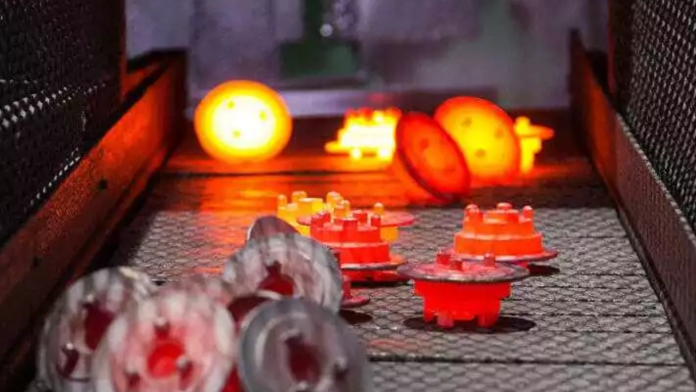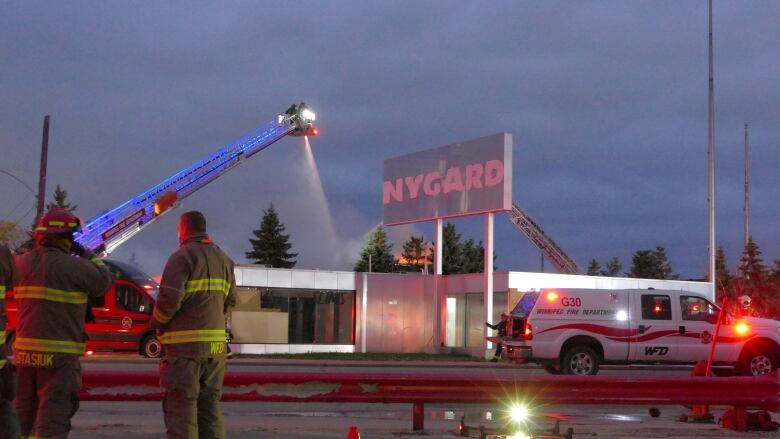Forged vehicle parts are components created by the forging process, which is a metalworking technique that includes shaping metal with localized compressive stresses. These components are well-known for their superior strength, durability, and dependability, making them a popular choice in crucial automotive applications. Crankshafts, connecting rods, gears, and axles are examples of forged automotive parts.
Forging is the technique of heating a metal billet and applying controlled pressure to deform it into the required shape. This produces a refined grain structure by aligning the internal grains of the metal along the curves of the part. Forging’s metallurgical process improves the material’s mechanical properties, including enhanced tensile strength and fatigue resistance.
Forged automobile parts have several advantages. Because of its excellent strength-to-weight ratio, lightweight yet strong components are possible, contributing to improved fuel efficiency and overall vehicle performance. Furthermore, the directional grain flow achieved in forge car parts improves the part’s stress resistance and provides optimal performance under extreme conditions.
Unveiling the Precision Techniques Shaping Car Parts
In the complex world of automotive manufacturing, the choice of forging techniques is important in shaping critical components that define a vehicle’s performance and durability. This article delves into the numerous forging processes used in the fabrication of automotive parts, highlighting the distinct qualities and applications of each approach.
Open-Die Forging: Shaping the Foundations
Open-die forging, commonly referred to as free forging, is a versatile process for shaping big and simple components. A heated metal billet is put between flat dies in this operation, and then force is applied to deform the material into the required shape. Open-die forging is commonly used in the automotive industry to produce basic components like crankshafts and connecting rods.
Closed-Die Forging: Precision in Complexity
Closed-die forging, also known as impression-die forging, is chosen for its precision in producing intricate and complex designs. The metal is inserted within a set of dies containing the appropriate shape throughout this operation. After that, the dies are closed and pressure is used to obtain the final form. Closed-die forging is extensively utilized in the production of gears, steering knuckles, and axle beams. Its accuracy and efficiency make it an excellent choice for producing intricate pieces with tight tolerances.
Upset Forging: Creating Compact Strength
Upset forging is the process of compressing the length of a metal bar to increase its cross-sectional area. This method is extremely beneficial for creating compact, high-strength components. Upset forging is extensively used in automotive applications to make components like bolts, nuts, and other fasteners. The method improves the mechanical qualities of the material by refining the grain structure, resulting in stronger and more durable products.
Swaging: Forming with Precision
Swaging is a forging process that includes shrinking a metal rod or tube while lengthening it. This is accomplished by using dies to impart radial pressure. Swaging is extensively employed in the automotive sector to produce components such as axles, shafts, and steering columns. The method assures precise dimensions and surface polish, making it appropriate for critical-accuracy products.
Isothermal Forging: Precision at Controlled Temperatures
Isothermal forging is a specialized technique in which the material’s temperature is maintained constant throughout the forging process. This technique is very useful for forging alloys with restricted temperature ranges. Isothermal forging is used in the automotive industry for components requiring fine control over microstructure and mechanical qualities.
Roll Forging: Continuous Shaping
Roll forging is a continuous operation that involves running a metal bar through a pair of spinning rolls to shape it. This technology is effective for mass manufacturing of cylindrical components like shafts and axles. Roll forging imparts a homogeneous grain structure and surface quality, which contributes to the forged parts’ increased strength and fatigue resistance.
Impression-Die Forging: Precision for High-Volume Production
Impression-die forging, also known as closed-die impression forging, is used to produce small to medium-sized parts in large quantities. The dies hold the final shape of the part, and several impressions can be made at the same time, increasing efficiency. Impression-die forging is extensively used in automotive manufacturing to produce components like gears, flanges, and bearing races, ensuring a compromise between precision and production speed.
Summary
The selection of forging methods is a major determinant of the quality, strength, and precision of automobile parts in the complicated tapestry of automotive manufacturing. Each technique serves a distinct function in the development of components that can resist the rigors of the road. The dynamic interaction of these forging technologies highlights the artistry and innovation that characterize the current automotive industry, guaranteeing that each automobile part is a tribute to the precision and quality produced through forging.











